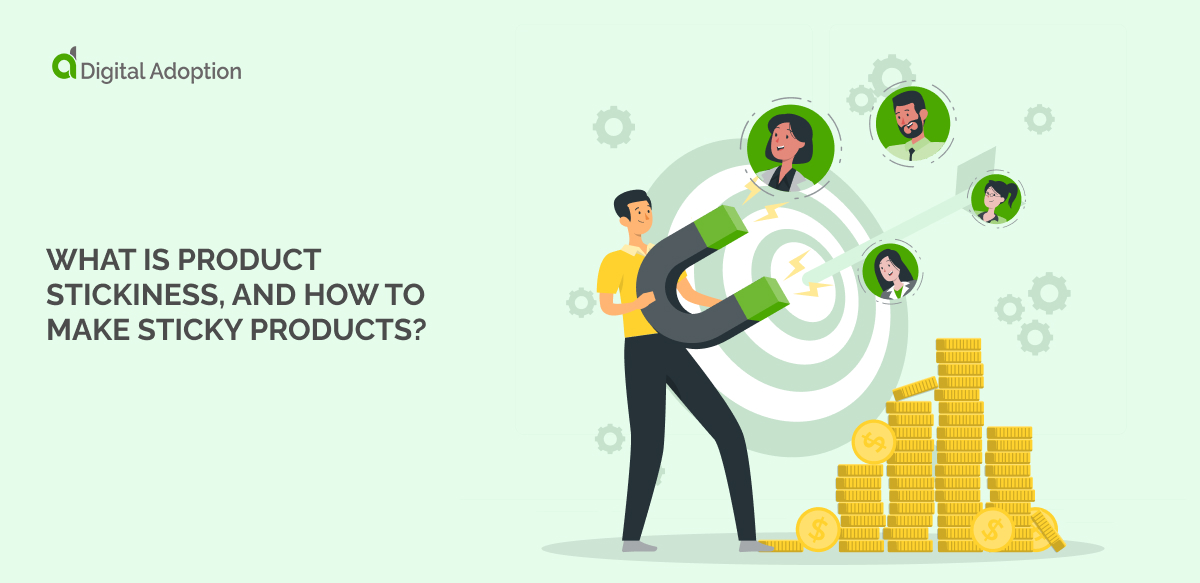Your organization won’t survive another decade.
Almost 9 out of 10 enterprise decision makers feel they’ve got less than two years to make progress with their digital transformation. After that, their business will have fallen too far behind.
“2018-2020 is predicted to be a crucial time for leaders to plan for and implement [digital transformation] across industries.”
Digital Marketing Institute
There’s one thing experts can all agree on. Digital adoption best practices are needed in order for an enterprise to succeed at digital transformation.
Manish Dudharejia writes in Entrepreneur that digital transformation is impossible “without leaders who have mastered the ins and outs of digital adoption.”
Lilach Bullock comments in Forbes that adopting technology to its fullest extent will “allow you to get a return on investment (ROI) on your digital assets.”
Why you need to focus specifically on digital adoption
You’re probably wondering to yourself, “why doesn’t digital adoption just happen?”
There’s been an upward trend in technology innovation since the turn of the century, yet worker productivity has remained fairly stagnant. But isn’t technology designed to improve employee performance?
The answer is yes. But unfortunately, poor user engagement relating to technology usage is contributing to the issue. A Gallup study found that only 13% of employees worldwide are engaged in the workplace.
Clearly, simply putting technology into the hands of workers does not automatically make them use it effectively.
Digital adoption means making technology usage highly effective and second nature to its users. It’s about turning digital tools into digital assets. Ultimately, adoption is the top goal for all digital transformation initiatives.
Digital transformation cannot be successful without digital adoption best practices. So it has to become a priority for enterprises looking to survive (and thrive) in the digital age.
5 digital adoption best practices you need to start implementing
1. Start with a strategic planning process
Many business leaders are like Alice in Wonderland. They know they need to change, they need to go somewhere. But they don’t know where.
You need to know where you want to go in order to get there before it’s too late. This is why strategic planning must be the first in your suite of digital adoption best practices.
What does success look like to you? What is your main objective? You need to define measurable goals from the outset, so you can map out how to achieve them.
Remember, digital adoption is about more than just IT deployment. You need to factor in the people, process, and structural changes. You’ll need to allocate resource to the communication, training, and ongoing development required to succeed.
2. Take a collaborative approach
Take a collaborative approach to your digital needs. Include representatives from multiple teams and departments to collectively identify needs, goals, capacity, and alignment.
The Canadian Government advises businesses to take a “holistic enterprise-wide approach” to technology implementation in order to have the best commercial impact.
“To successfully maximize the efficiency of systems and processes, management must be committed to the technology’s implementation; users must accept it in their daily work.”
Government of Canada
One of the biggest challenges facing digital adoption is how to increase connectivity and engagement. If you take a collaborative approach and involve employees in the process of digital change, they’re more likely to be receptive to it.
Boost employee engagement to improve employee satisfaction. This helps productivity, which benefits business growth.
3. Invest in training tools
Digital adoption needn’t be as difficult as all that. The smart money is on using technology to your advantage.
Digital Adoption Platform (DAP) pioneers WalkMe quite rightly state that, “using technology should be the way we overcome challenges, not the challenge itself.”
What a DAP does is provide at-the-minute guidance to technology users via WalkThrus, Launchers, and TeachMes. The DAP learns user behavior and provides help when they need it.
This eliminates the need for costly training programs. And it doesn’t matter how many times the user needs that help. The DAP layer sits over the top of any digital system, ready to advise as and when necessary.
4. Ensure strong leadership
Everyone must own the vision, when it comes to digital transitions. Leaders must “walk the talk” otherwise others are unlikely to follow.
For the majority of traditional enterprises, successful digital adoption needs more than just IT implementation.
It requires a culture change. A total shift from outdated values and processes to a new outlook that not only embraces technological innovation, but spearheads it.
This is where plenty of digital change initiatives come unstuck. Business leaders still treat digital adoption as though it’s an IT process. It’s not, it’s a cultural one.
5. Track and measure success
If you want to achieve the desired outcomes of your tech implementation, you must define and monitor specific digital adoption KPIs.
Salesforces advises its customers to “develop a framework of key performance indicators” because simply tracking user logins isn’t enough.
Find out more about why you need digital adoption KPIs and 3 types that will help you to measure success here.
With these digital adoption best practices, you’re more likely to lead your organization through successful periods of digital transformation.













